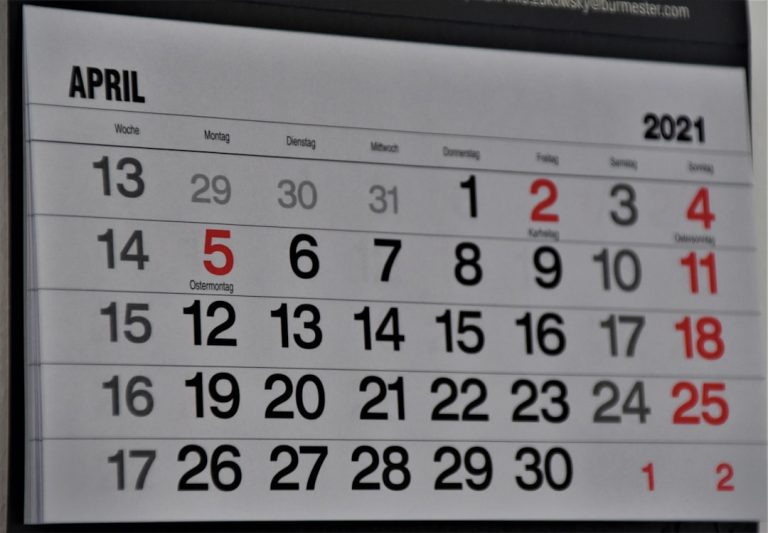My Guide to Using the “No-Zero Days” Rule for Consistent Progress
We’ve all been there: that overwhelming feeling when a big goal looms large, and the motivation to even begin feels like a distant memory. Days turn into weeks, and weeks into months, often marked by the disheartening tally of “zero days” – days where we did absolutely nothing towards what truly matters to us. But what if there was a simple, yet profoundly effective, rule that could break this cycle and pave the way for consistent, undeniable progress?
Enter the “no-zero days” rule. It’s not about perfection, nor is it about Herculean efforts every single day. Instead, it’s a powerful philosophy centered around one core principle: never let a day pass without taking at least one tiny, meaningful action towards your goal. This isn’t just a productivity hack; it’s a mindset shift that can transform how you approach personal growth, career aspirations, health objectives, and virtually any area where consistency has felt elusive. In this comprehensive guide, I’ll walk you through understanding, implementing, and mastering the “no-zero days” rule to build unstoppable momentum and achieve the consistent progress you’ve been craving.
Unpacking the “No-Zero Day” Ethos for Daily Wins
At its heart, the “no-zero day” rule is deceptively simple: do one thing. Just one. This isn’t about clearing your entire to-do list or hitting a major milestone every day. It’s about showing up, even when you don’t feel like it, and making a minimal, but intentional, effort. The genius of this rule lies in its ability to dismantle the “all-or-nothing” mentality that often paralyzes us.
Deconstructing the “Zero Day” Trap
Before we embrace the “no-zero day,” let’s understand its nemesis: the “zero day.” A zero day is when you make zero progress, zero effort, zero movement towards a goal you care about. It’s easy to fall into this trap, especially when tasks feel daunting, motivation wanes, or external circumstances conspire against us. The problem with zero days isn’t just the lost opportunity; it’s the insidious erosion of confidence and the reinforcement of negative self-talk that follows. Each zero day makes the next one easier to justify, creating a downward spiral.
The Philosophy of Tiny Triumphs
The “no-zero day” rule counters this by championing tiny triumphs. Did you want to write a novel? Write one sentence. Did you aim to exercise? Do one push-up or stretch for 60 seconds. Want to learn a new language? Learn one new word. These actions, however small, serve several critical functions:
- They build momentum: Even a tiny push helps overcome inertia. Once you start, even minimally, it’s often easier to do a little more.
- They reinforce identity: Each action tells your brain, “I am a person who works on X.” This identity shift is crucial for building lasting habits.
- They reduce resistance: The bar is set so low that it feels almost impossible to fail. This lowers the psychological barrier to starting.
- They provide a sense of accomplishment: Even a small win generates positive feedback, encouraging you to continue.
This ethos isn’t about being productive 24/7; it’s about being consistent. It’s about ensuring that even on your worst days, you still make a deposit, however small, into your progress account.

Architecting Your First “No-Zero Day” Blueprint
Understanding the concept is one thing; putting it into practice is another. Your journey begins with a clear, actionable blueprint tailored to your goals and life. This isn’t about generic advice; it’s about making the “no-zero day” rule work specifically for you.
Identifying Your Core Targets for Consistent Progress
Before you can apply the rule, you need to know what you’re applying it to. Pick one or two key areas where you want to see consistent progress. Don’t try to apply it to everything at once. Common areas include:
- Health & Fitness: Exercise, healthy eating, hydration.
- Career & Learning: Project work, skill development, networking.
- Personal Development: Reading, meditation, journaling.
- Creative Pursuits: Writing, painting, playing an instrument.
Be specific. Instead of “get fit,” think “exercise.” Instead of “write my book,” think “write.”
Defining Your “Minimum Viable Action” (MVA)
This is the cornerstone of your blueprint. For each target, define the absolute smallest, most trivial action you can take. This MVA should be so easy that you almost can’t *not* do it. It should take minutes, not hours. The goal is to make starting effortless.
- For writing: “Write one sentence” or “open the document.”
- For exercise: “Do one push-up,” “stretch for 60 seconds,” or “walk to the mailbox.”
- For learning a language: “Review one flashcard” or “learn one new word.”
- For meditation: “Sit for 30 seconds” or “take three deep breaths.”
- For a messy room: “Pick up one item.”
The MVA isn’t about achieving a lot; it’s about preventing a zero day. It’s about maintaining continuity. For more on setting achievable goals, consider how your MVA contributes to larger objectives.
Integrating Your MVA into Your Daily Rhythm
Once you have your MVAs, think about when and how you’ll naturally fit them into your day. This is where habit stacking can be incredibly useful. Attach your MVA to an existing habit.
- “After I brush my teeth, I will do one push-up.”
- “Before I open social media, I will write one sentence.”
- “While my coffee brews, I will review one flashcard.”
The key is to remove friction. Make it so easy to start that you don’t even have to think about it. Consider how this approach helps you overcome procrastination by lowering the barrier to entry.
Navigating the Inevitable Bumps: Keeping Your Streak Alive
Life happens. There will be days when you’re sick, exhausted, overwhelmed, or simply not feeling it. The true test of the “no-zero day” rule isn’t during smooth sailing; it’s how you navigate these inevitable bumps. The goal isn’t perfection, but resilience and adaptation to keep your streak alive.
When Motivation Evaporates: Leaning on Your MVA
On days when motivation is nowhere to be found, this is precisely when your Minimum Viable Action becomes your lifeline. Don’t try to force a full workout or a lengthy writing session. Revert to your MVA. Just one sentence. Just one stretch. The power here is in consistency, not intensity. Remind yourself that the goal is to prevent a zero day, not to be a superstar every day. This small act preserves your identity as someone who takes action and maintains your momentum. For more on maintaining motivation


